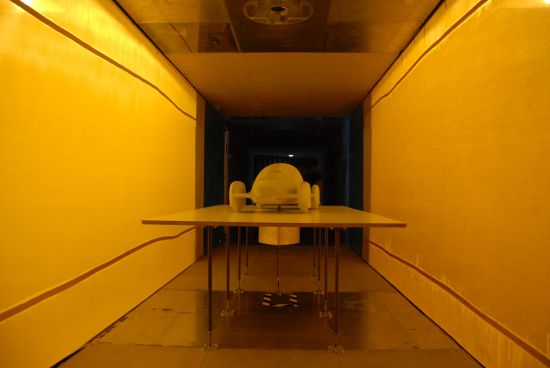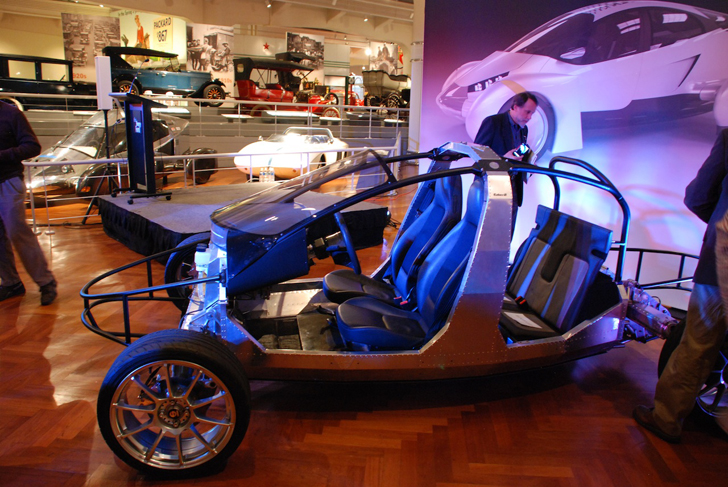Virginia Tech Wind Tunnel
A couple of hours away from our Lynchburg shop is Virginia Polytechnic Institute and State University and their Stability Wind Tunnel. Acquired from NACA Langley (National Advisory Committee for Aeronautics, the precursor to NASA) in 1958, Virginia Tech’s six-foot tunnel is one of the largest university operated wind tunnels in the United States with very good flow quality and maximum speeds of 80m/s.
Which works well for our quarter-size models of the next version VLC. We mounted our models (testing a total of 4 different next-generation models) on a ground board that we constructed; the tunnel is meant for testing planes, not cars, so we needed to simulate the road with our ground plane.

First we tested a model of our X Prize car, as a control, and were very pleased to see that the drag was close to that tested on the #95 car at the GM Aero Lab. We were even more pleased when our models 2 & 3, roomier and designed with an eye towards regulatory compliance, were just as slippery as the X Prize car.
We learned a lot from these tests. We attached yarn tufts to be able to visualize airflow, and using tape and clay evaluated the impacts of various surface features and details (such as mirrors, shut lines, and wiper recesses). We have good information for the next iteration and know we can do better.
But as good as this tunnel is, there are limitations that occur with quarter scale models. The characteristics of airflow (Reynold’s numbers) are a function of both air speed and object length (among other factors), and we were not able to run the tunnel at 4x normal air speed to get full-scale Reynold’s number. We are looking for comparative results, not absolute values, both in how our new shapes stack up with the X Prize car and how the new shapes differ from one other.
Specific results come from a full-size car in a much larger tunnel. Stay tuned.


 Friday, August 5, 2011 at 03:50PM
Friday, August 5, 2011 at 03:50PM
Reader Comments (3)
Awesome news. It is nice to hear, what looks like a bigger/roomier car, has the same drag as the Xprize version. Looking forward to the full size testing. The Cd is the same, but what about the A? I think I read somewhere that the v4 has the same frontal area, but I can't find it right now.
It looks like the "ground board" is not aerodynamically shaped (for example, the leading lip is does not appear to be rounded), and I wonder if this has any effect on the measurements. Does the disruption to the airflow settle down sufficiently in time for its affect on the model to be minimal?
BTW, please make a hi-performance version of the VLC! You racers know that light weight has many more benefits than just fuel efficiency!
Keep it going guys. Good stuff.
The product definitely seems to be excellent while.... Appreciate it pertaining to providing.